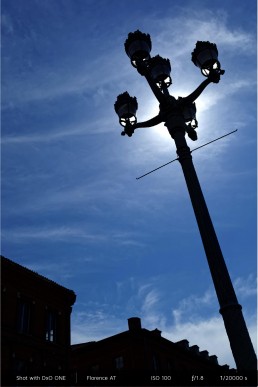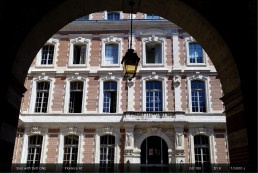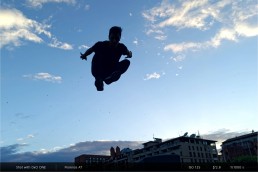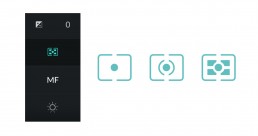Contrast Composition
You can use a photo’s contrast to create artistic effects. You can technically alter the contrast using the metering mode and exposure compensation.
Contrast in an image depends on the various light sources and the presence of light and dark elements in the frame.
In the summer, the light in the middle of the day is very harsh and creates significant contrast between light and dark areas. Photographers typically choose to shoot with their back to the sun to have more even lighting. By facing the sun (backlighting), you can achieve unique effects. For example, backlit shots let you take silhouette portraits. Your subject is separated from the rest of their well-lit environment, creating a beautiful contrast between light and shadow that emphasizes the subject’s outline. Use an element such a shadowed arch to frame the image and to add depth and contrast.
In the winter, photographing snow amounts to taking a picture of a white field surrounded by high-contrast subjects. In AUTO (automatic) mode, your DxO ONE can apply a medium exposure to the entire scene, but because there are many light values, they tend to be overexposed — the snow turns gray and loses its contrast. For a better effect, use the exposure compensation feature, which you can use with all shooting modes. If you still can’t capture the result you want, select M (manual) mode and test several different setting options to find the one you like the best. The goal is to find a good balance between the light and dark areas in the scene, with the understanding that if the snow is too light, the depth and texture will disappear.
After you wrap up your skiing adventure and shoot at the end of the day, the contrast will be less pronounced, making the exposure easier to adjust.
Technically, you primarily adjust the contrast using your DxO ONE’s three metering modes.
Matrix metering calculates an average light value and reduces contrast. This is a good option when the sun is bright and you want to keep as many details visible in the light areas as in the dark areas.
Center-Weighted metering, in contrast, bases its calculations on the center of the image; you can use this in most cases if the photo does not have much contrast.
Spot Weighted metering affects only the very small area you select (i.e., the focus point). If your selection contains a very bright area, such as a lamp against a black background, the lamp will be properly exposed, but the rest of the image will be underexposed or feature high contrast. This effect produces a type of image called “low key” Conversely, if the subject is dark, the background will become very light or even overexposed — a “high-key” image.
When the sky is gray or cloudy, shadows can be absent. The resulting image is restful and soft but lacks relief and contrast. You can increase the contrast by changing the exposure provided by the meter. To do so, use your DxO ONE’s exposure compensation feature to underexpose your image. This feature, which is accessible in Auto, P (program), A (aperture priority), and S (shutter priority) modes, lets you increase the contrast by moving the cursor to select the desired value. If the image is still too soft, increase the contrast even more using photo editing software.
When the contrast in your scene was too strong and you weren’t able to correct it while shooting, you can always recover the dark or light tones in post-production with DxO’s editing software. You can also lighten up shadows as you’re taking the picture by changing the intensity of DxO’s Mobile Smart Lighting feature in your DxO ONE settings (more details in section “Shooting settings”).






 Download page
Download page